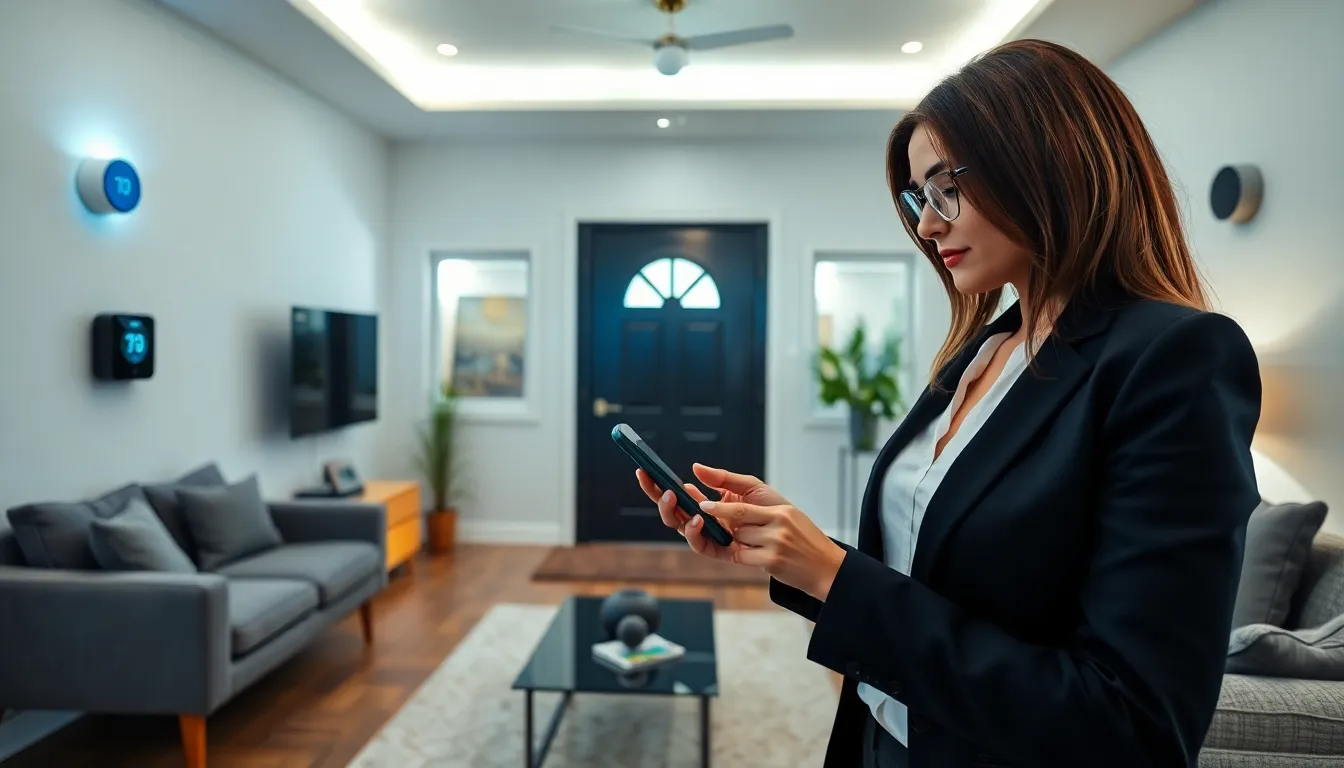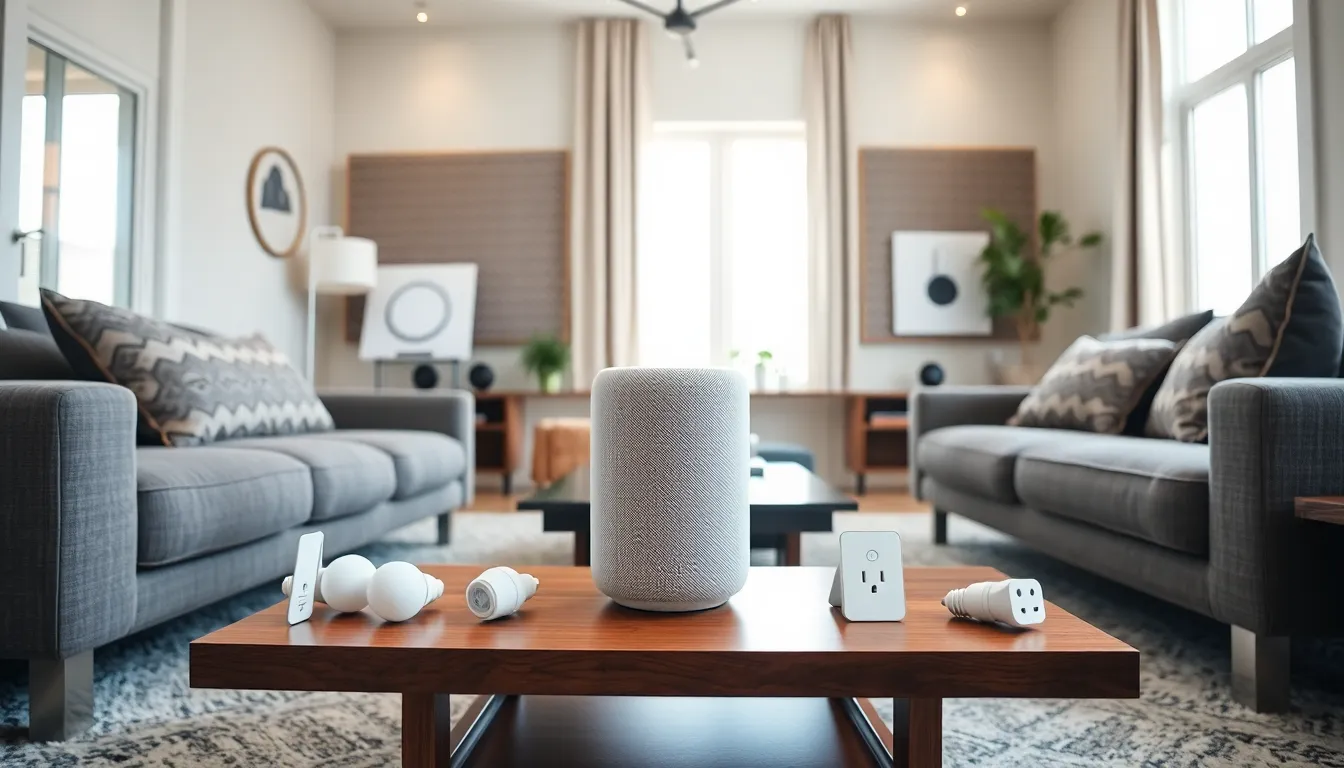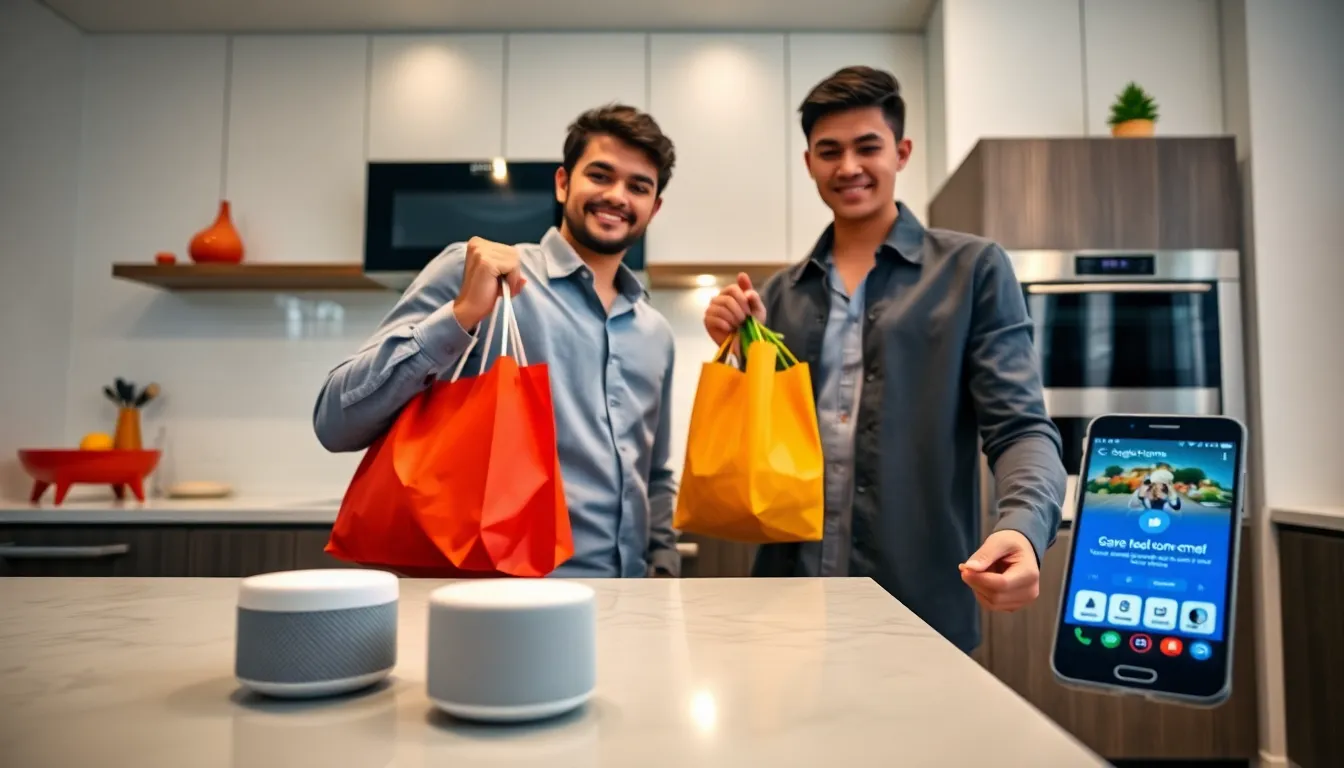Imagine walking into your home and having it greet you like an old friend. Smart home devices can turn that dream into reality, but only if they’re set up right. With the right guidance, transforming your living space into a tech-savvy haven can be as easy as pie—if pie were a series of confusing app downloads and Wi-Fi passwords.
Table of Contents
ToggleOverview Of Smart Home Devices
Smart home devices enhance convenience, security, and efficiency. These devices include smart speakers, thermostat systems, lighting controls, cameras, and security systems. Each type serves a specific function, contributing to a seamless living experience.
Smart speakers like Amazon Echo or Google Nest operate as the central hub, controlling other devices through voice commands. Users interact with these speakers to manage daily tasks efficiently. Thermostats such as Nest Learning Thermostat adapt to preferences, promoting energy savings and comfort.
Lighting controls allow homeowners to set schedules and adjust brightness remotely. Smart bulbs from Philips Hue or LIFX provide flexibility in creating desired atmospheres. Security cameras from Arlo or Ring monitor home activity, offering real-time alerts and peace of mind.
Smart locks enhance home security by allowing access through keyless entry. Homeowners can grant temporary access to guests or service providers conveniently. Additionally, smart plugs enable control of electrical devices, optimizing energy utilization throughout the home.
Integration remains crucial for a successful smart home setup. Many devices connect through Wi-Fi or Bluetooth, facilitating communication and functionality. Compatibility among devices allows for creating customized routines that cater to individual lifestyle needs.
Understanding these devices simplifies the setup process, leading to a more personalized environment. With proper installation, smart home technology transforms daily living, making routines more manageable and improving overall quality of life.
Preparing For Smart Home Device Setup
Preparing for smart home device setup involves evaluating needs and selecting the right equipment. This process ensures optimal integration into daily living.
Assessing Your Needs
Identifying personal preferences stands as the first step. Consider which areas require automation, such as lighting, temperature, or security. Individuals may focus on features that enhance convenience, like voice control or remote access. Establishing a budget also plays a crucial role, with costs varying significantly across devices. Gathering information about existing technology helps determine compatibility with new devices. Conducting an inventory of appliances aids in deciding which smart devices align best with lifestyle demands.
Choosing Compatible Devices
Ensuring device compatibility remains fundamental for seamless operation. Researching ecosystems, like Amazon Alexa or Google Assistant, enables streamlined integration. Selecting devices that communicate effectively promotes a more cohesive smart home experience. Smart bulbs, security cameras, and thermostat systems must support the chosen hub for optimal function. Reading reviews and checking compatibility lists fosters informed decisions. Focusing on energy efficiency not only reduces utility bills but also enhances sustainability. Targeting devices that offer integration with popular platforms maximizes overall benefits for users.
Step-By-Step Setup Process
Setting up smart home devices involves several essential steps to ensure a smooth experience. Begin with careful attention to each task, making the process seamless and efficient.
Setting Up Your Hub
Start by selecting a central location for your smart hub. Ideal placements minimize distance from other devices and maximize Wi-Fi coverage. Power on the hub and connect it to your home Wi-Fi network, following prompts on the companion app. Next, create an account or log in to access device features. Configure basic settings according to preferences; customizing voice recognition settings enhances user experience. After settings are adjusted, ensure the hub is up to date with the latest software to improve functionality.
Connecting Devices
Connecting devices begins with opening the companion app for your smart hub. Locate the option to add new devices, then follow the prompts to enable pairing mode. Each device, such as smart speakers or thermostats, usually has a unique pairing process. Make sure Bluetooth is enabled on your smartphone for easier connections. Once devices appear on the app, confirm connectivity and assign them to specific rooms for better organization. Completing these steps can significantly enhance the synchronization and automation of your smart home system.
Common Issues And Troubleshooting
Smart home device setup might encounter common issues requiring troubleshooting. Connectivity problems often arise, especially during initial installation. Users frequently experience difficulties connecting devices to Wi-Fi networks. To resolve this, ensure the router is within range and check credentials for accuracy.
Integration issues may occur between different brands of devices. Compatibility checks of all components before purchase prevent this concern. Reviewing manufacturer specifications aids in confirming the functionality of devices within the same ecosystem.
Voice recognition problems can frustrate users. Misunderstandings in commands lead to incorrect actions. Adjusting the microphone settings or repositioning the device often enhances recognition capabilities.
Battery life also poses a challenge for wireless devices. Regular monitoring of battery status keeps devices operational. Utilize rechargeable batteries when possible to minimize replacements.
Firmware updates play a crucial role in device performance. Not keeping devices updated might lead to malfunctions or security vulnerabilities. Scheduling automatic updates allows devices to receive enhancements without user intervention.
In cases of unresponsive devices, power cycling typically restores functionality. Unplugging and reconnecting the device often resolves temporary glitches. Factory resetting may become necessary for persistent issues, but this action leads to loss of personal settings.
Lastly, customer support teams offer valuable assistance. Many manufacturers provide extensive online resources, including FAQs and community forums. Utilizing these can help users troubleshoot issues independently.
Security Considerations
Securing smart home devices is essential to protect personal data and privacy. Regularly updating device firmware strengthens security measures, reducing vulnerability to cyber threats. Using strong, unique passwords for each device enhances security further and prevents unauthorized access.
Employing network security protocols, like WPA3 for Wi-Fi, creates a safer environment. Consider segmenting the home network to isolate smart devices from primary use devices like computers. This limits potential risks to sensitive data stored on personal devices.
Implementing two-factor authentication provides an additional security layer for device access. Users should regularly review device permissions, ensuring they only grant necessary access to apps and services. Disabling unnecessary features, like remote access, minimizes risks.
Monitoring smart home devices is also vital. Utilizing security logs helps track access and identify suspicious activity. Regular checks for unusual patterns can alert users to possible breaches.
Choosing reputable brands with robust security practices ensures improved protection. Many companies provide detailed security policies and regular updates for their devices. Verifying these practices establishes trust in the devices.
Given the diverse nature of smart devices, ensuring compatibility with respected security protocols is important. Secure devices from leading manufacturers usually offer better integration with network security features. Overall, prioritizing these considerations creates a secure and efficient smart home environment.
Setting up smart home devices can transform any living space into a personalized haven. With the right approach and attention to detail, homeowners can enjoy enhanced convenience and security. Prioritizing compatibility and integration among devices ensures a seamless experience.
By following best practices for setup and maintenance, users can optimize their smart home systems for energy efficiency and improved functionality. Emphasizing security measures protects personal data and enhances peace of mind.
Investing time and effort into a well-planned smart home setup ultimately leads to a more manageable and enjoyable daily life. Embrace the possibilities that smart technology offers and take the first step toward a smarter home today.








